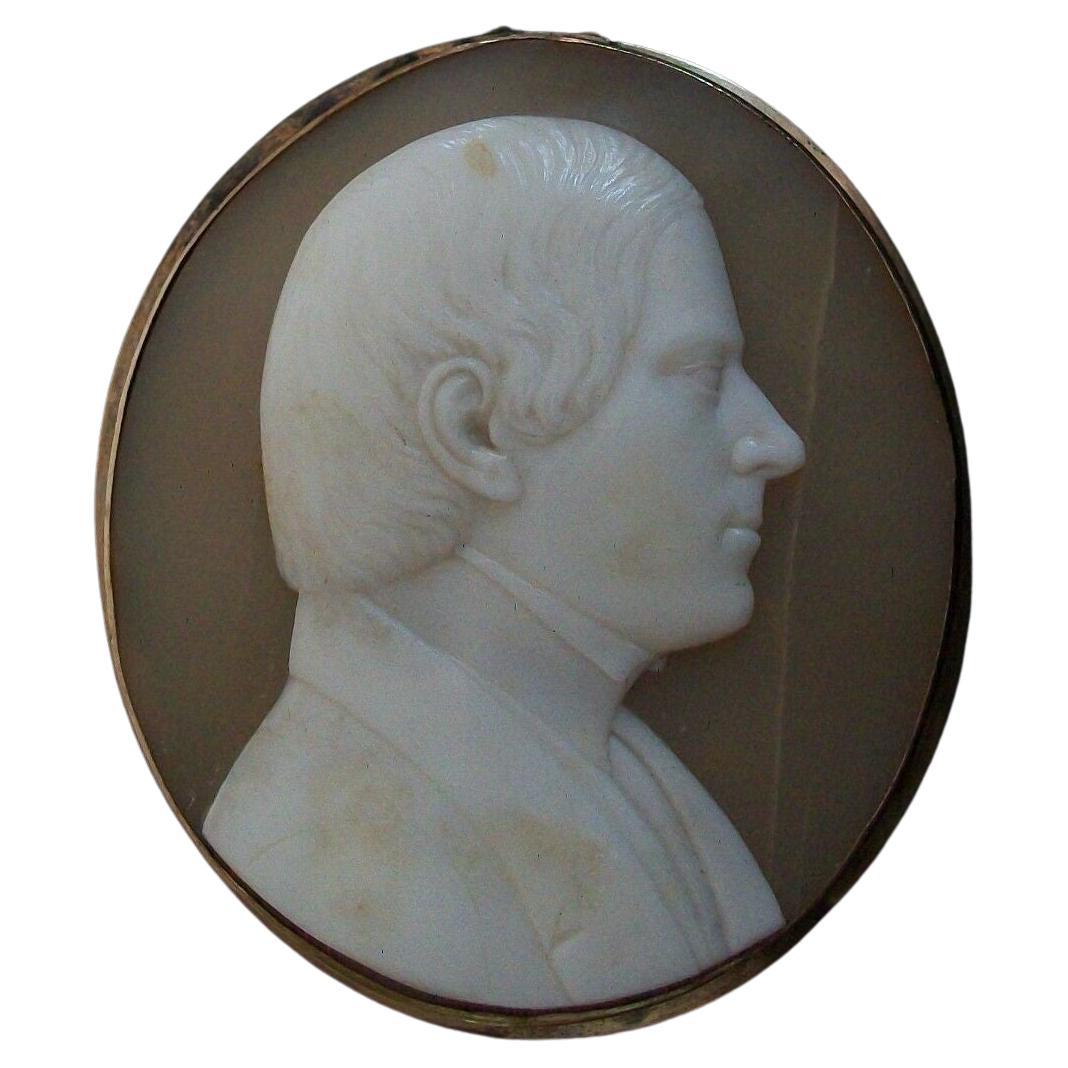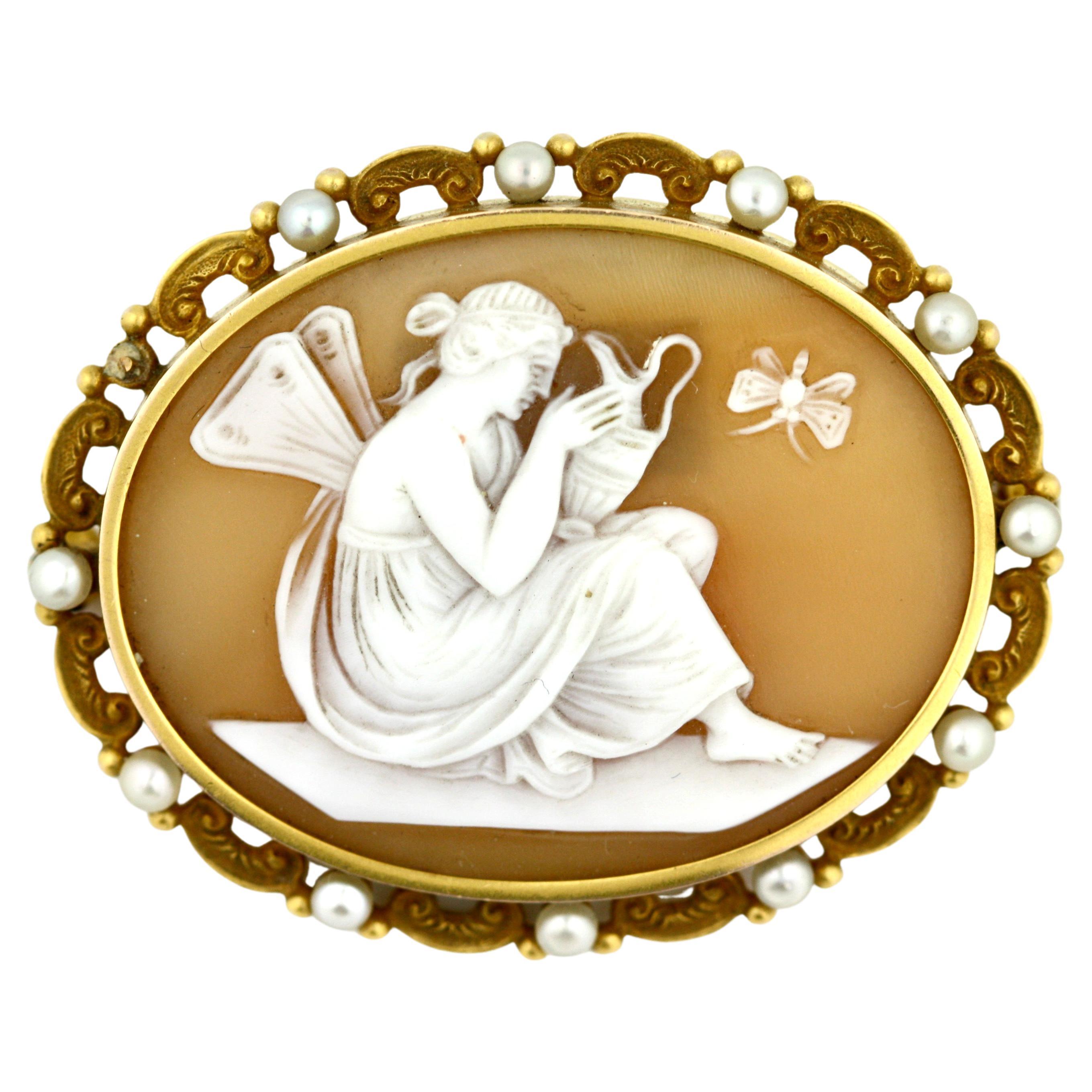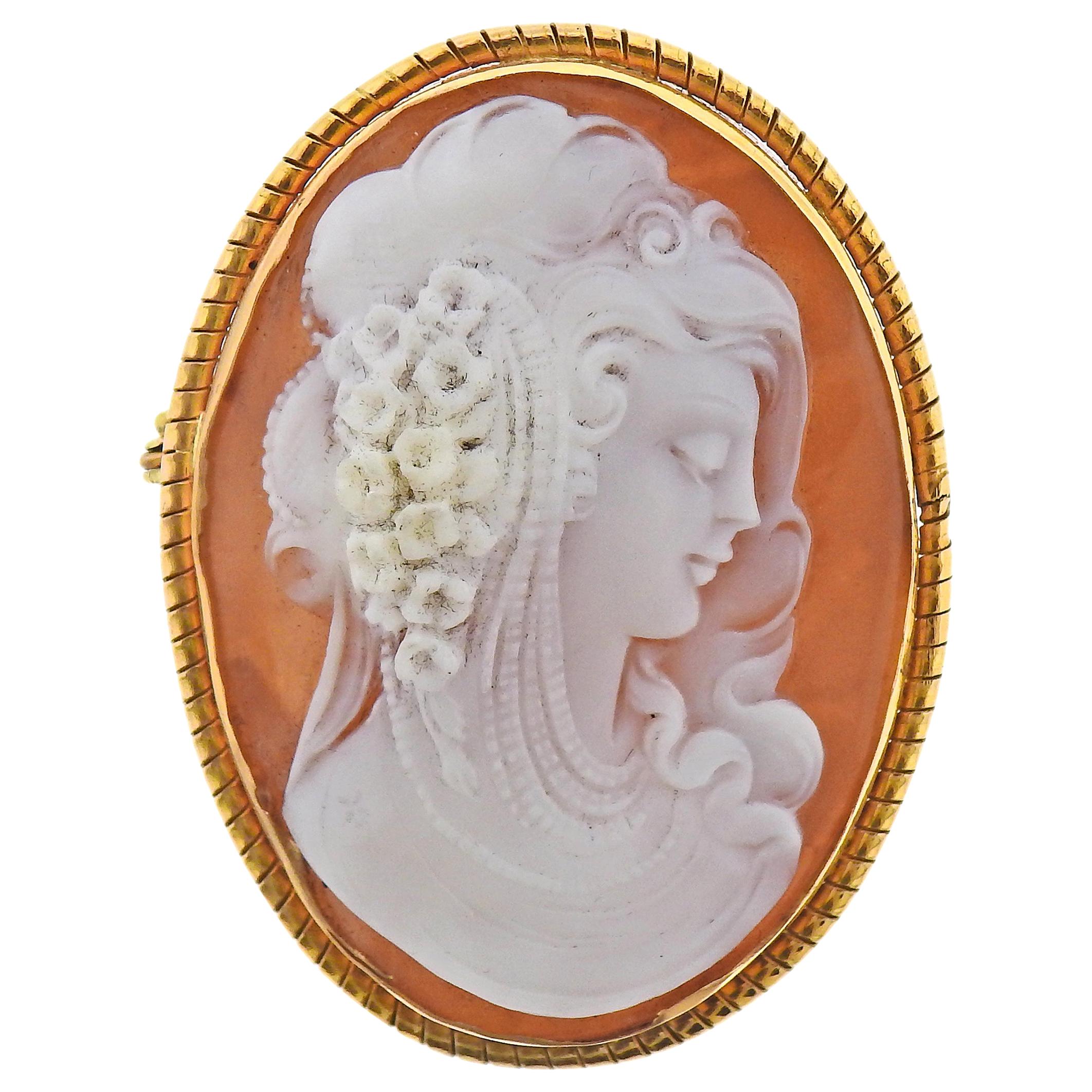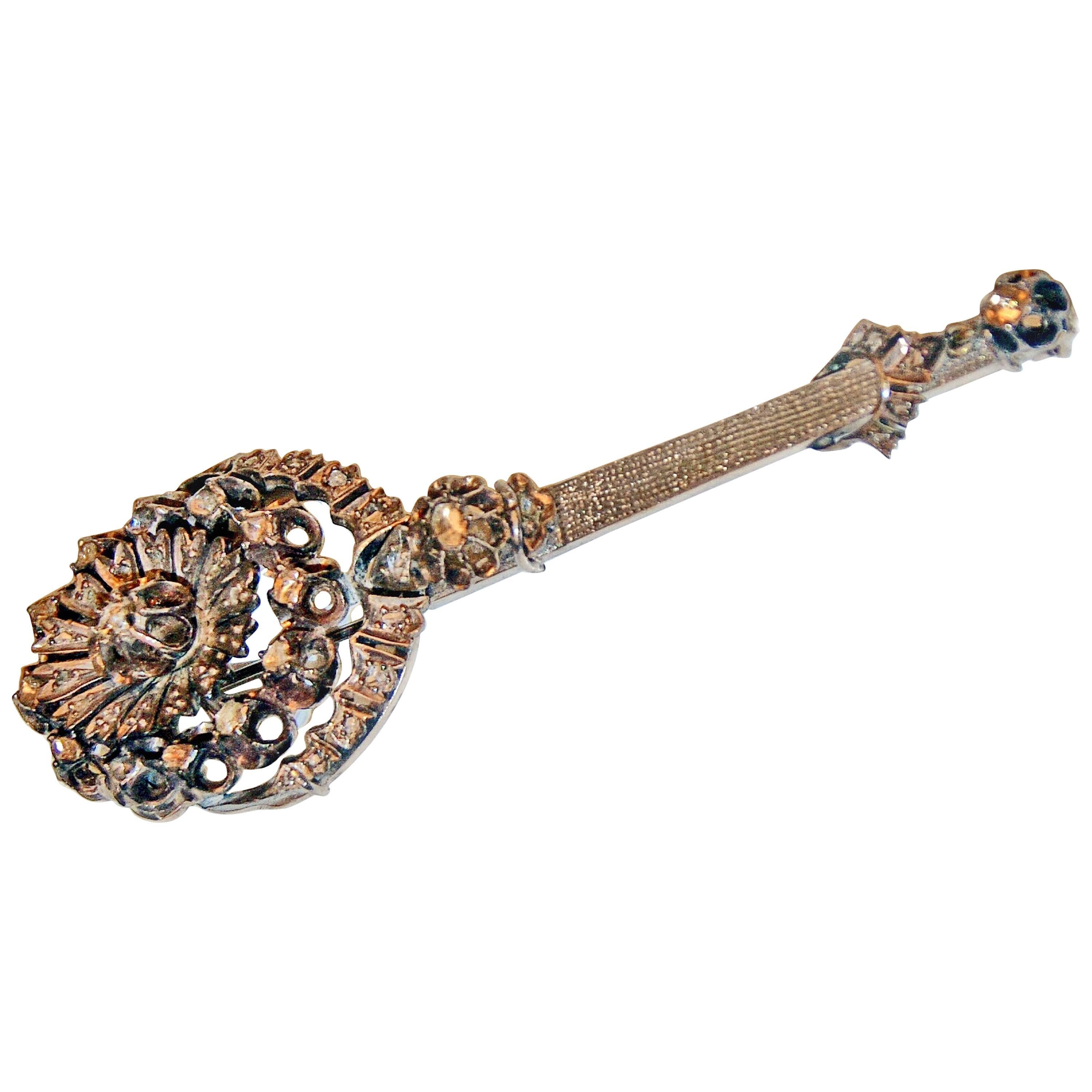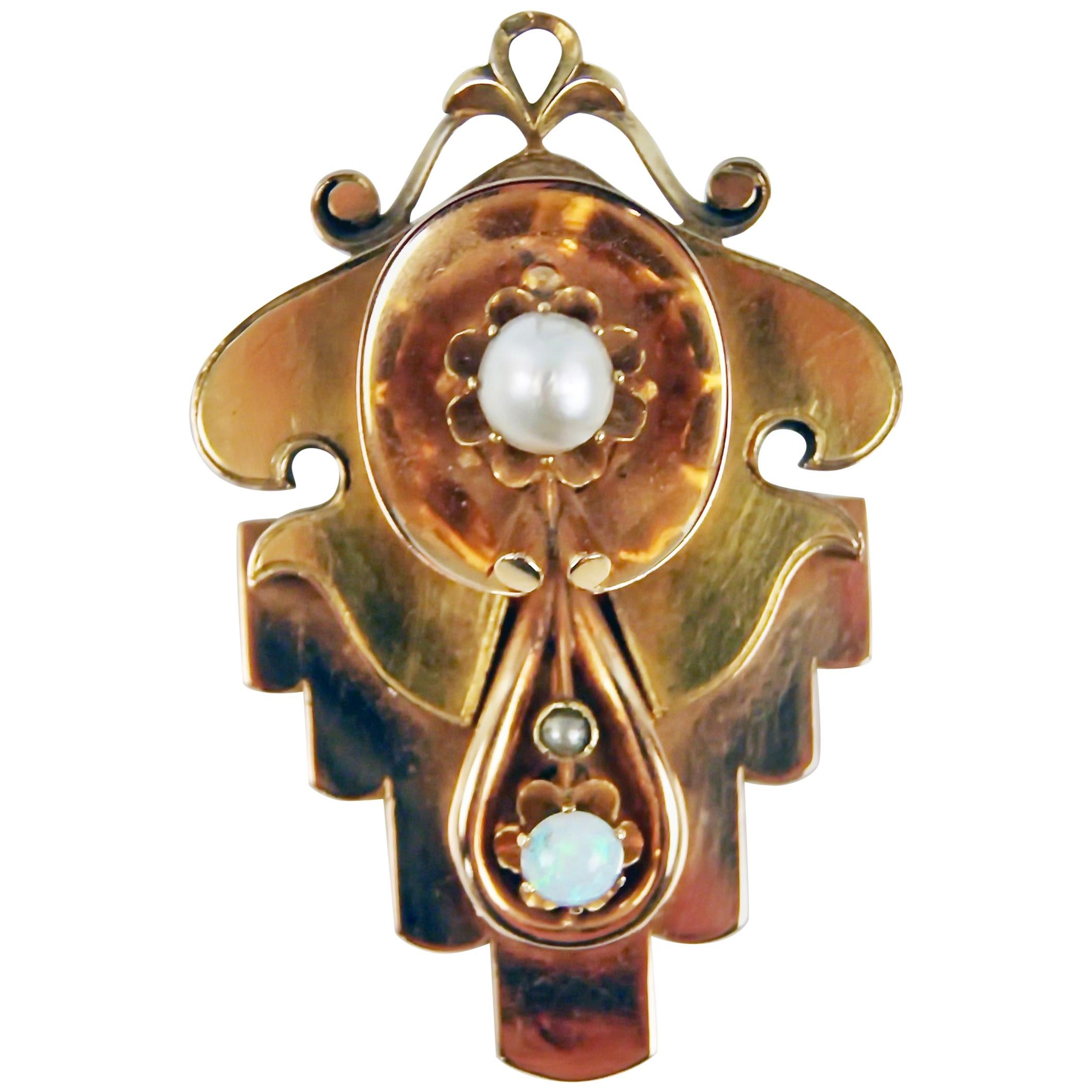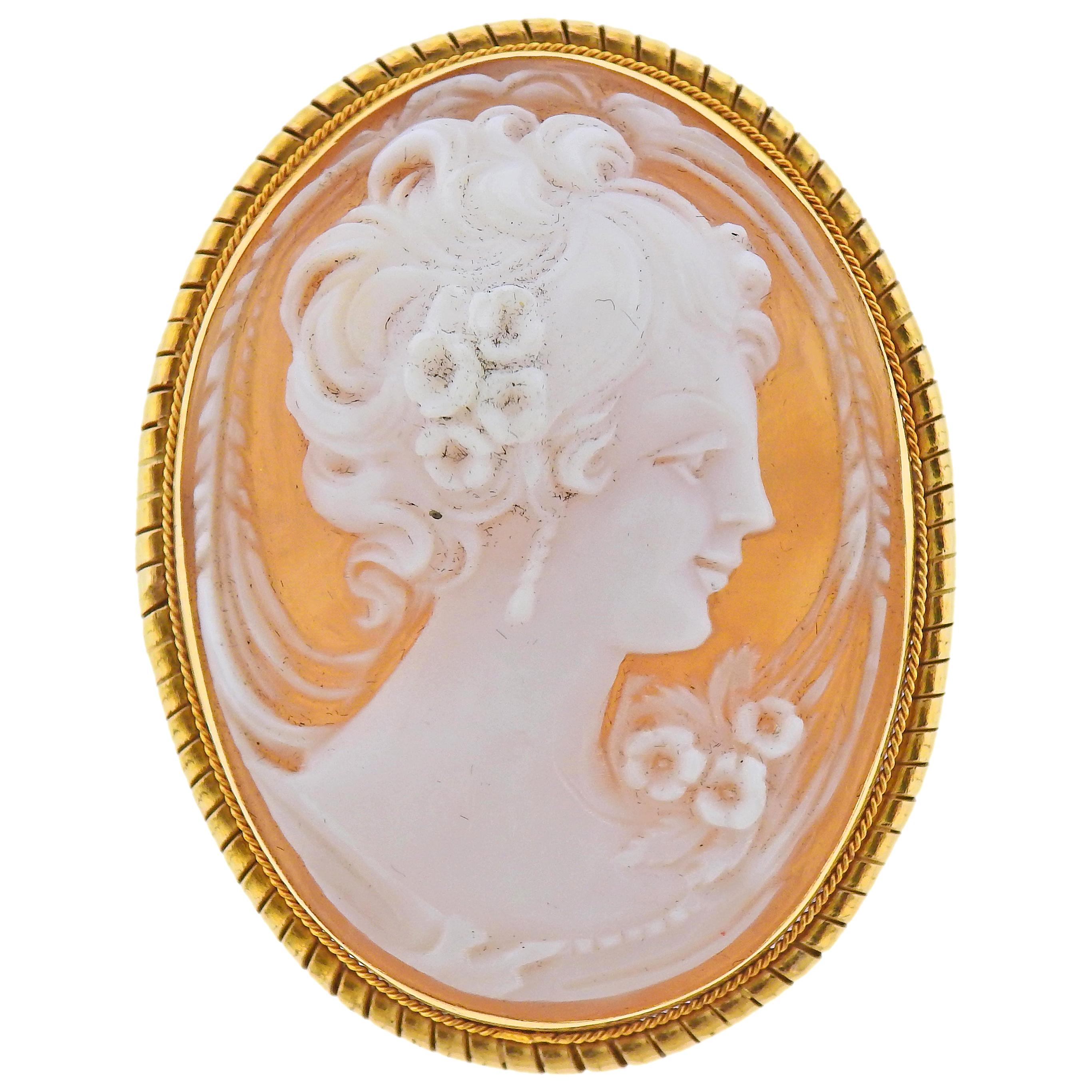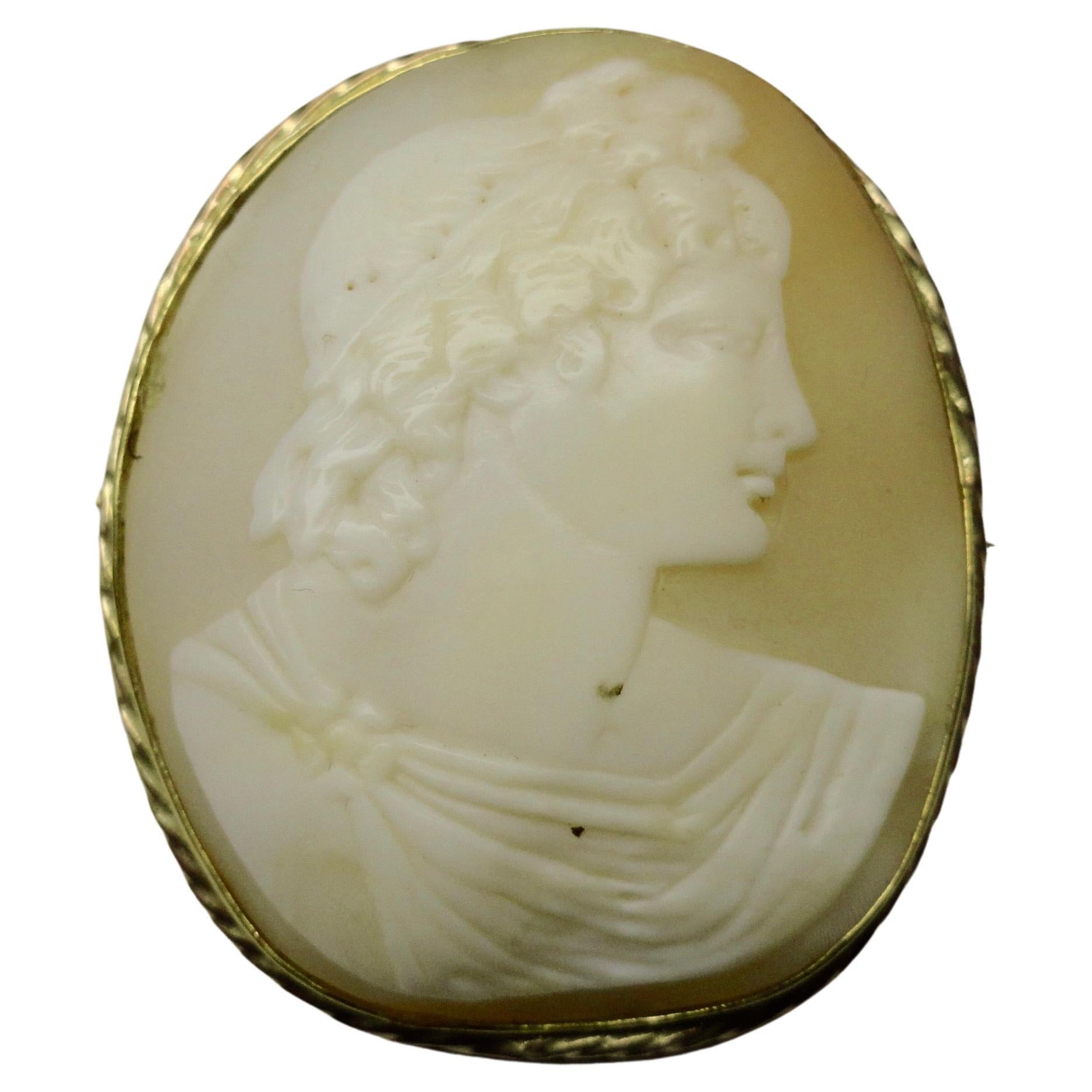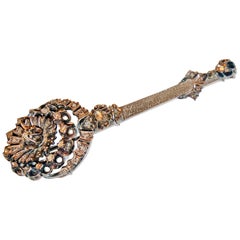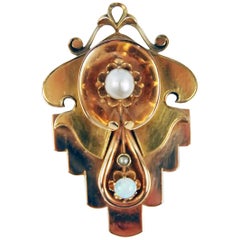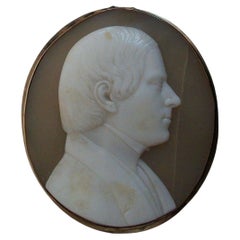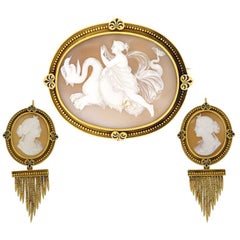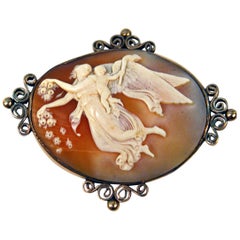
Cameo Brooch Gold 585 Shell Winged Nymph Cherub of Marriage Vienna, circa 1870
View Similar Items
Want more images or videos?
Request additional images or videos from the seller
1 of 5
Cameo Brooch Gold 585 Shell Winged Nymph Cherub of Marriage Vienna, circa 1870
About the Item
- Creator:Viennese manufactory
- Metal:14k Gold
- Stone Cut:Old European Cut
- Weight:25 g
- Dimensions:Height: 2.16 in (54.87 mm)Width: 2.56 in (65.03 mm)Length: 1.18 in (29.98 mm)
- Style:High Victorian
- Place of Origin:Austria
- Period:1870-1879
- Date of Manufacture:MADE CIRCA 1870
- Condition:there aren't any imperfections existing.
- Seller Location:Vienna, AT
- Reference Number:1stDibs: LU6487136322
About the Seller
5.0
Vetted Seller
These experienced sellers undergo a comprehensive evaluation by our team of in-house experts.
Established in 1988
1stDibs seller since 2014
21 sales on 1stDibs
More From This SellerView All
- Pendant Brooch Gold 585 Three Turquoises Biedermeier Period Vienna circa 1850Located in Vienna, ATVery interesting pendant / brooch made during Viennese Late Biedermeier Period: It is of rhombic as well as of stylized form type to which three turquoises are attached to middle ar...Category
Antique 1850s Austrian High Victorian Brooches
MaterialsTurquoise, 14k Gold
- Stick Brooch Gold 585 Diamonds circa 0.50 Carat Austria Vienna Vintage MadeLocated in Vienna, ATGOLDEN LATE VICTORIAN STICK BROOCH WITH DIAMONDS. MOST PROBABLY MADE IN VIENNA / AUSTRIA (c. 1900). GOLD (14 ct / 585) & DIAMONDS (VINTAGE CUT / 1...Category
Antique Early 1900s Austrian Late Victorian Brooches
MaterialsDiamond, 14k Gold
- Pendant Brooch Gold 585 Two Pearls One Opal Biedermeier Period Vienna circa 1850By Viennese ManufactoryLocated in Vienna, ATVery interesting brooch made during Viennese Late Biedermeier Period: It is of abstract as well as of stylized form type to which a large pearl is attached to top area of it / furth...Category
Antique Mid-19th Century Austrian High Victorian Brooches
MaterialsOpal, Pearl, 14k Gold
- Stick Brooch Gold 585 Turquoises Late Biedermeier Austria Vienna VintageLocated in Vienna, ATGOLDEN LATE BIEDERMEIER (= HIGH VICTORIAN) Stick Brooch with Turquoises. MADE CIRCA 1860. GOLD (14 ct / 585) & TURQUOISES WEIGHT: 15.0 GRAMS ...Category
Antique Mid-19th Century Austrian High Victorian Brooches
MaterialsTurquoise, 14k Gold
- Brooch Flower Bouquet Gold 585 Brilliants 0.30 Carat Sapphires Pearl, ViennaLocated in Vienna, ATGOLDEN BROOCH VINTAGE (MADE CIRCA 1900) SHAPED AS FLOWER BOUQUET, WITH VARIOUS GEMS: GOLD (14 ct / 585) COVERED WITH BRILLIANTS (VINTAGE CUT / 0.30 ct), TWO SAPPHIRES AND ONE PEA...Category
Antique Early 1900s Austrian Art Nouveau Brooches
MaterialsDiamond, Pearl, Sapphire, 14k Gold
- Art Nouveau Cluster Brooch Gold 585 Diamonds 2.30 Carat Vienna, 1900Located in Vienna, ATGolden Art Nouveau Cluster Brooch with Diamonds. Gold (14 ct / 585 - checked) & Diamonds (vintage cut / 2.30 ct) WEIGHT: 4.0 grams (= 0.14 OZ / 0.13 troy ounces) MEASU...Category
Antique Early 1900s Austrian Art Nouveau Brooches
MaterialsDiamond, Ruby, 14k Gold
You May Also Like
- Victorian Gentleman's Shell Cameo Brooch, Gold Setting, U.K., Circa 1870'sLocated in Chatham, CAExceedingly rare Victorian custom made hand carved gentleman's shell cameo brooch or pin - right facing portrait - a sign of wealth and prestige when worn by 18th and 19th century gentlemen (Napoleon wore one on his wedding day) - gold filled setting with tube hinge and extra long pin...Category
Antique Late 19th Century British Victorian Brooches
MaterialsGold-filled
- John Brogden Shell Cameo Brooch and Earrings, English, circa 1870By John BrogdenLocated in London, GBAntique shell cameo brooch and earrings by John Brogden, English, circa 1870. A yellow gold suite of jewellery, the brooch composed of a horizontally situated oval Bull’s Mouth shell cameo of the Greek goddess Selene riding a serpentine dragon in a rubover collet setting, encircled by a conforming frame of gold beading and twisted gold wire punctuated with four gold palmette form plaques engraved and decorated with dark blue enamel and placed at the cardinal points, the reverse mounted with a hinged pin and scroll clasp, the earrings each composed of a vertical oval Bull’s Mouth shell cameo engraved with a bust length portrait of Selene with crescent-set headdress, encircled by a conforming frame matching that of the brooch with the addition of a pendant decoration composed of a horizontal bar of gold beading and twisted gold wires suspending gold link chains graduated from centre and ending in conical gold elements, the reverses mounted with French wire fittings, all in a fitted red leather case, the interior marked ‘FIRST CLASS PARIS MEDAL/ 1855.1867.1851/ PARIS FIRST CLASS & LONDON PRIZE MEDALS/ JOHN BROGDON/ Goldsmith/ MANUFACTORY/ 16, Henrietta St. Covent Garden/ London’. The cameo—defined as a gem, usually either a mineral or a shell, upon which a design has been carved in relief—is believed to have originated in Hellenistic Greece, during the third century BC. These miniature sculptures, at that time confined to the medium of hardstone, are thought to have been made with the primary purpose of personal adornment. The same practice of mounting cameos in jewellery was then continued by the Ancient Romans, and they are known to have been worn by many a Roman emperor. After the fall of Rome the fashion for cameos went into a decline, until it was again revived during the Renaissance period, brought about by a keen interest in the ancient world. At this time both antique and contemporary cameos were mounted in jewellery, as well as collected as objet d’art. The art of cameo cutting was revived in Italy, where it would remain a centre for the coming centuries. Again there was a lull in interest in carved gemstones, until the Neoclassical revival of the eighteenth century, largely stimulated by the discoveries of the ancient Roman cities of Pompeii and Herculaneum. As with the Renaissance, antique specimens were generally prized over modern cameos, and the worldliest men in Europe held them among their collections of art and antiques. That said, carving centres in Rome and Torre del Greco (near Naples) in Italy were established in response to the demand of the Grand Tourists, who travelled to Italy and Greece to become educated in the wonders of the ancient world. It was at this time that shell cameos, mostly made in Torre del Greco due to its proximity to the sea, became more popular, owing to the relative ease in carving shell over hardstone. In addition to Rome, hardstone cameos also became a specialty of Idar Oberstein, Germany, which had a long history with both the gem mining and cutting trade. In a shift away from the collector’s cases of the previous century, the nineteenth century saw a strengthening in the fashion for wearable cameos. After the Empress Josephine donned a cameo-set suite of jewellery at the coronation of Napoleon in 1804, cameo jewellery became all the rage. Napoleon played a further hand in promoting the art by establishing a gemstone carving school in Paris, inspired by his appreciation for the arts of the ancient world. By the mid-nineteenth century shell cameos, in part due to their lightness compared with hardstone cameos, were the height of fashion. Large shell cameos as well as hardstone cameos were set into contemporary mounts, often as suites of jewellery. Some of the best cameos of the nineteenth century—carved by a select group of recognized carvers—were set into revivalist mounts, corresponding to the subject matter. In Victorian England cameo jewellery was particularly prized, due in part to the fact that the Queen owned and wore a number of cameo jewels. One example which can often be seen in official portraits is the Badge of the Order of Victoria and Albert, carved by Tommaso Saulini of Rome, who also produced cameos for the maker of the present suite, John Brogden. To meet demand some carvers set themselves up in London, including William Schmidt, a German carver from Idar Oberstein, who produced cameos for top London jewellers, including Brogden, Carlo Giuliano and Child & Child. In fact, Schmidt purports to have been the first to carve cameos out of opal, which Brogden reportedly displayed in the Paris Exhibition of 1878. An extant example, now in the collection of the British Museum, was set by the Giuliano firm. Regarding subject matter, cameos throughout time have been largely figural, from bust length profile portraits to scenes with multiple full-length figures, and sometimes animals. Ancient Greek and Roman cameos often depicted mythological scenes as well as contemporary figures. During the Renaissance, mythological scenes were popular, often taken directly from ancient sculpture, as well as portraits of notable contemporary figures. During the eighteenth and nineteenth centuries, due to the revivalist styles, both Renaissance and Classical subjects were copied and set into matching (and sometimes unmatching) revivalist mounts. From the Renaissance through the Victorian era, being able to recognize the source of the carving in a cameo was a mark of erudition, revealing in the wearer knowledge of Classical art. As mentioned, the present cameo parure...Category
Antique 1870s English Victorian Brooches
MaterialsYellow Gold
- Shell Cameo BroochLocated in Palm Beach, FLShell cameo brooch Depicting a young nymph, surrounded by gold and 11 seed pearls one missing, measuring approximately 42 x 35mm, French import ass...Category
20th Century Brooches
- Gold Shell Cameo Pendant BroochLocated in New York, NY18k gold cameo brooch pendant. Measuring 48mm x 36mm. Marked 750. Weight - 13.5 grams.Category
20th Century Brooches
MaterialsGold
- Shell Cameo and Gold BroochLocated in New York, NYIntricately carved shell cameo brooch set in 18 karat yellow gold. Dimensions L 2 1/4 x W 1 3/4". Weighs 29.5 gr./19.0 dwt.Category
21st Century and Contemporary Brooches
- Shell Cameo Gold Pendant Brooch PinLocated in New York, NY18k yellow gold pendant brooch, with shell cameo, depicting a lady's profile. Brooch is 45mm x 35mm. Marked 750. Weight - 12 grams.Category
20th Century Brooches
MaterialsGold
Recently Viewed
View AllMore Ways To Browse
Antique High Jewelry
Gold 585
Antique Wedding Gift
Antique Wedding Flowers
Cherub Jewlery
Cherub Jewellery
Cherub Jewelry
Victorian Cherub
Shell Flower Framed
Jewelry Austria Vienna
Austria Brooch
Austrian Brooch
Jewelry With Cherubs
Wing Brooch
Victorian Cameo Brooch
Older Cameos
Antique Shell Cameos
Antique Shell Cameo Cameos
